13 Home Remedies To Treat A Leg Ulcer Effectively
Effective, easy, and natural healing solutions to relieve those painful sores.
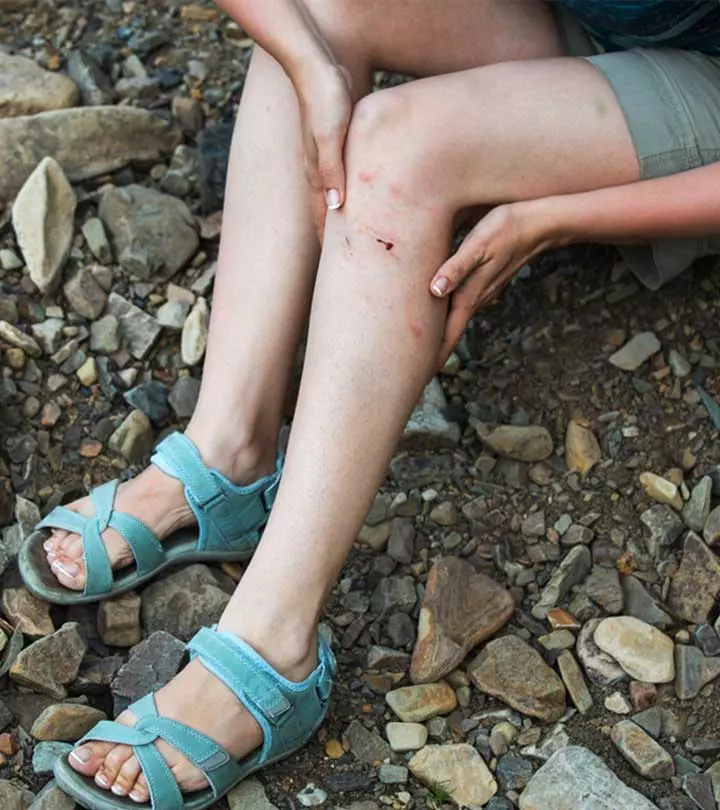
Image: shutterstock
If you are wondering how to treat a leg ulcer at home, you are not alone. Leg ulcers can be frustrating and painful, but there are natural ways to help them heal. Leg ulcers often start from small cuts or injuries that do not heal properly and eventually become deep sores. These sores might also indicate more serious health problems causing poor wound healing. Luckily, there are many home remedies that can speed up healing and make you feel better. In this article, we share some natural solutions that can help you treat your leg ulcer and get on the road to recovery. Keep reading to discover these helpful remedies!
In This Article
How To Treat Leg Ulcers Naturally
- Aloe Vera
- Coconut Oil
- Honey
- Gotu Kola
- Tea Tree Oil
- Turmeric
- Apple Cider Vinegar
- Vaseline
- Rosemary Essential Oil
- Hawthorn Berries
- Yarrow
- Flaxseeds
- Chamomile
Natural Remedies To Heal Leg Ulcers
1. Aloe Vera
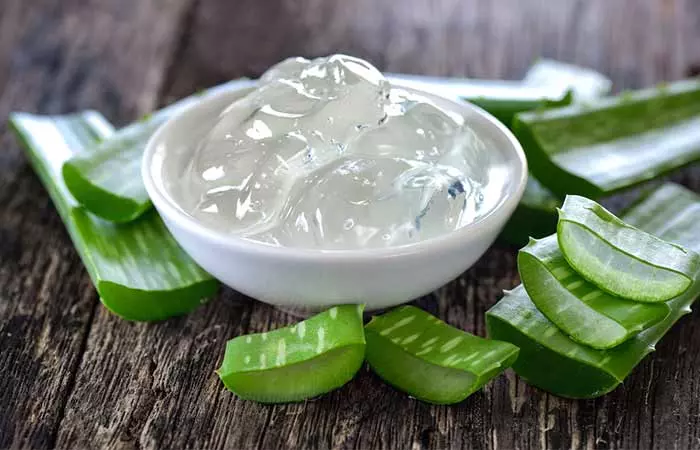
You Will Need
Aloe vera gel
What You Have To Do
- Take an aloe vera leaf and cut it slightly.
- Scrape off the jelly-like substance from the leaf.
- Apply the gel directly to the ulcers on your leg.
- Leave on for a while and then wash it off.
How Often You Should Do This
Do this 2-3 times daily.
Why This Works
Aloe vera is a therapeutic herb that is widely used to treat various ailments. It is extremely effective in healing leg ulcers as it not only inhibits the growth of bacteria but also prevents further infection (1). It contains compounds like anthraquinones and certain hormones that are said to render wound healing properties to it (2).
2. Coconut Oil
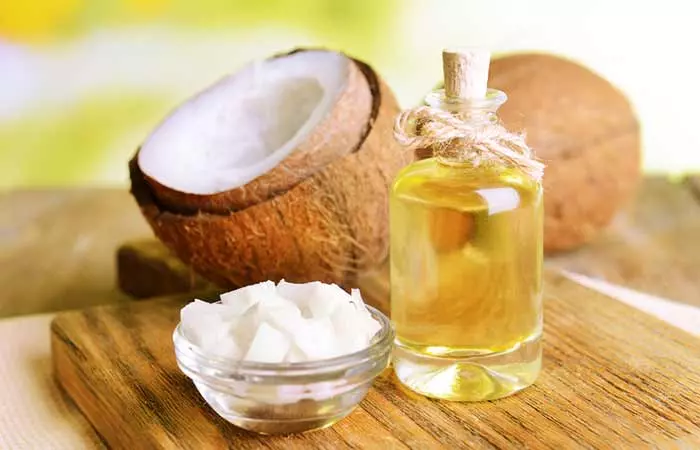
You Will Need
1 to 2 teaspoons of virgin coconut oil
What You Have To Do
Take some virgin coconut oil in your palm and apply it gently to your leg ulcers.
How Often You Should Do This
You must do this 2-3 times daily for a speedy recovery.
Why This Works
Coconut oil exhibits wonderful antibacterial properties owing to the presence of fatty acids like lauric acid. It is also anti-inflammatory and is quite effective in healing leg ulcers and the associated symptoms (3), (4).
3. Honey
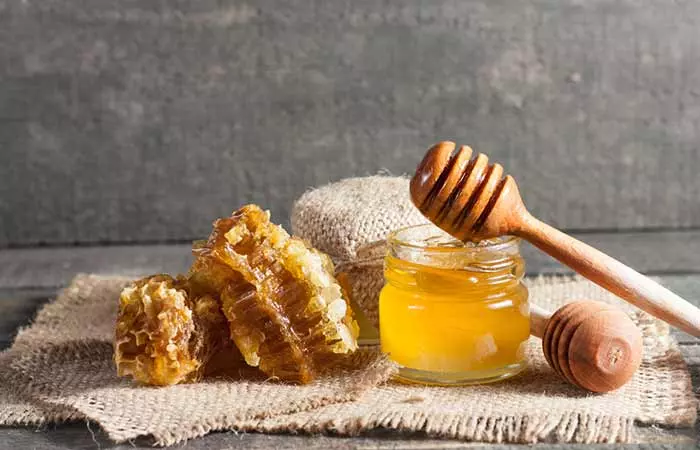
You Will Need
100% organic honey
What You Have To Do
- Take a little organic honey on your fingertips.
- Apply it gently to the open ulcers on your leg and leave it on.
- You can wash it off with water after 10 to 15 minutes.
How Often You Should Do This
Do this at least 2-3 times daily.
Why This Works
Honey is one of the most commonly used remedies for treating wounds and burns and is one of the best remedies for leg ulcers (5). Its anti-inflammatory properties help reduce swelling and pain, while its healing properties accelerate the healing of the ulcers. Honey is also antibacterial and can inhibit further infection of the ulcers (6), (7).
4. Gotu Kola
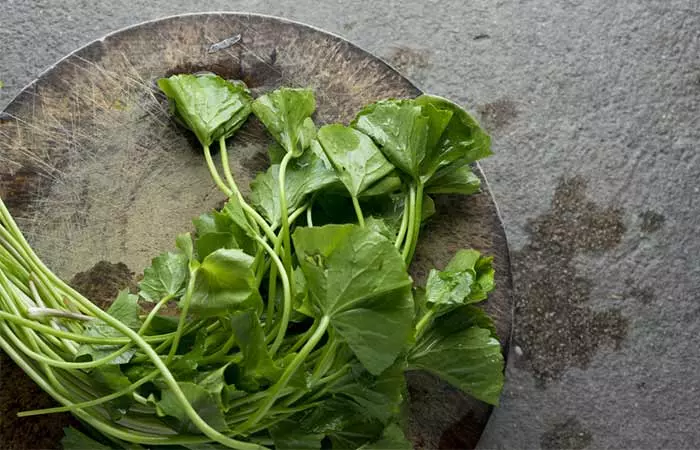
You Will Need
- A handful of gotu kola leaves or 1 tablespoon of dried gotu kola
- Water
What You Have To Do
- Grind the gotu kola leaves with enough water to form a thick paste.
- Apply this paste to your leg ulcers and leave it on for 15-20 minutes.
- Wash it off.
How Often You Should Do This
Apply this paste 1-2 times daily.
Why This Works
Gotu kola is a creeping herb that is mainly found in tropical regions like Asia and Africa. It is used to treat open wounds like leg ulcers and burns (8). The presence of compounds like asiatic acid and madecassic acid gives gotu kola its wound-healing and anti-inflammatory properties (9), (10), (11).
5. Tea Tree Oil
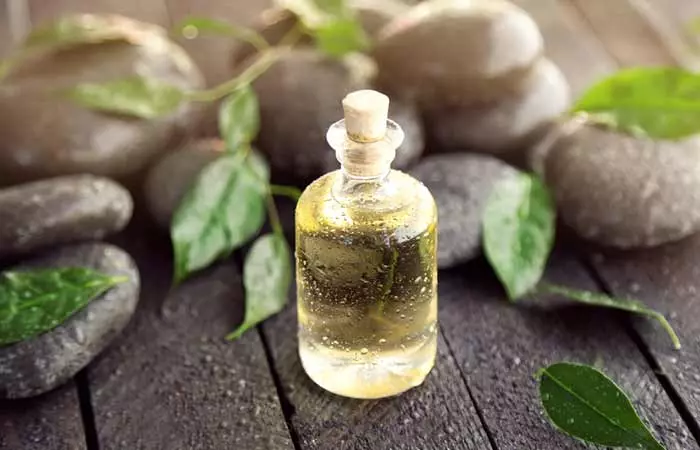
You Will Need
- 10 to 12 drops of tea tree oil
- 30 mL of coconut oil
What You Have To Do
- Mix the tea tree oil with coconut oil.
- Apply a little of this mixture to the leg ulcers.
- Store the remaining mixture in a clean container for further use.
How Often You Should Do This
Do this at least twice daily for best results.
Why This Works
Tea tree oil is a powerful antiseptic and is used to treat various skin infections (12), (13). Researchers have proved the efficiency of tea tree oil in treating chronic leg ulcers as well (14). It also exhibits strong antibacterial and anti-inflammatory activities, which can be of great help in the treatment and healing of leg ulcers (15).
6. Turmeric
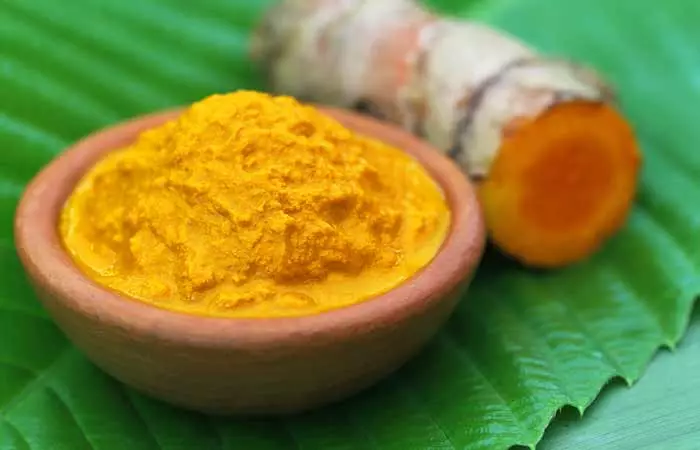
You Will Need
- 1 teaspoon of turmeric powder
- Water
What You Have To Do
- Mix the turmeric and water to make a thick paste.
- Apply the paste to the ulcers on your leg and let it dry.
- Wash it off with warm water.
- You can also consume a glass of hot milk with turmeric to help your body combat the infection from within.
How Often You Should Do This
You must do this at least twice daily.
Why This Works
Turmeric has been used for ages for wound healing due to its antibacterial properties (16). It contains a compound called curcumin that has exceptional anti-inflammatory and wound-healing properties (17), (18).
7. Apple Cider Vinegar
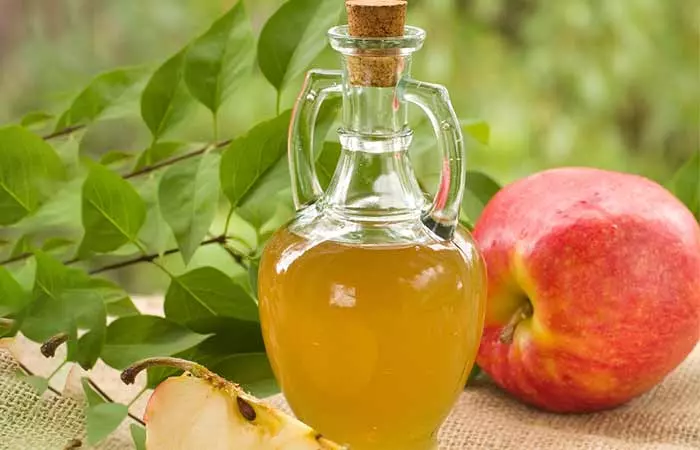
You Will Need
- 1 tablespoon of apple cider vinegar
- 1 to 2 tablespoons of warm water
- A pinch of pepper
- A small washcloth
Note:
Some versions of this remedy call for the use of pepper powder. However, it is not recommended as pepper powder may get accumulated in the ulcer tissue.
What You Have To Do
- Mix the apple cider vinegar with warm water.
- Soak a small washcloth in this solution and place it on the wound.
- Leave it on for 10 to 15 minutes.
How Often You Should Do This
Do this twice daily.
Why This Works
Apple cider vinegar is another natural but effective remedy for leg ulcers. It contains high amounts of acetic acid and is also a rich source of various vitamins and minerals, which make it very effective in treating microbial infections like leg ulcers (19). Due to its wound-healing nature, it is also widely used to treat varicose veinsi A condition of hands and legs where the blood flows backward or leaks and thus the veins collect blood, causing them to enlarge. and hence can be quite helpful in treating leg ulcers (20).
8. Vaseline

You Will Need
Vaseline or petroleum jelly
What You Have To Do
Apply a thin layer of Vaseline directly on the leg ulcers.
How Often You Should Do This
Do this multiple times daily.
Why This Works
Petroleum jelly is commercially sold as Vaseline. It forms a protective layer on the ulcer, aiding in wound care and thereby preventing further infection of the open sore (21). It can also prevent scarring and itchiness. However, it is not a good idea to use Vaseline if you plan on dressing your leg ulcers.
9. Rosemary Essential Oil
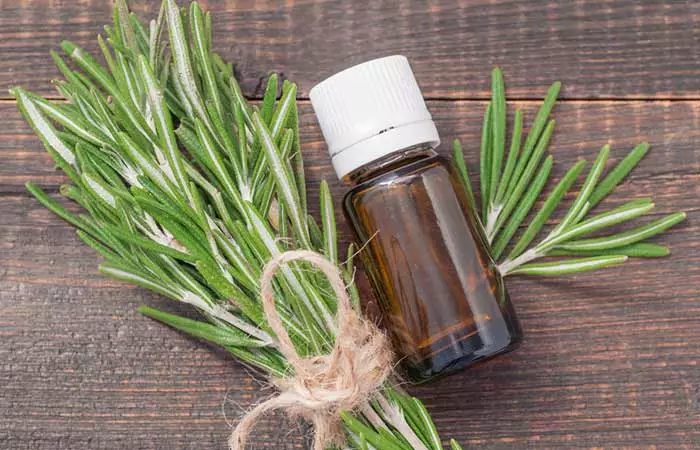
You Will Need
- 3 to 4 drops of rosemary essential oil
- 1 to 2 teaspoons of coconut oil
What You Have To Do
- Mix the rosemary oil with coconut oil.
- Apply this blend directly to the leg ulcers.
How Often You Should Do This
You must do this 2-3 times daily.
Why This Works
Rosemary is used for various purposes, including the treatment and management of wounds (22). It possesses anti-inflammatory properties that can help treat the swelling and inflammation (23). Rosemary is also a natural antiseptic and can hence inhibit bacterial growth in the leg ulcers (24).
10. Hawthorn Berries

Hawthorn berries are often used for reducing stress and pressure, but they are also quite effective in treating leg ulcers and open wounds. They have anti-inflammatory and antibacterial properties and help speed up the healing process (25), (26). Although fresh hawthorn berries are hard to find, you can get the supplements almost everywhere.
11. Yarrow
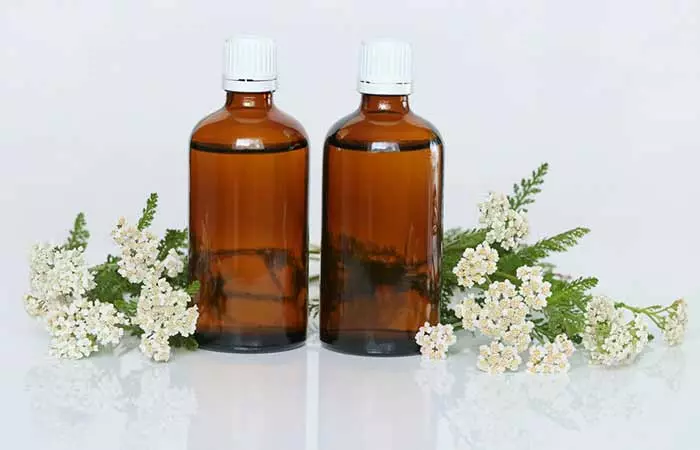
You Will Need
Yarrow supplements or topical ointment containing yarrow
What You Have To Do
Consume yarrow supplements (350 mg) to help your body recover faster.
You can also apply an ointment made of yarrow on the ulcers.
How Often You Should Do This
Do this on a daily basis.
Why This Works
Yarrow is almost as effective as Hawthorn in treating open wounds like leg ulcers (27). It exhibits antibacterial and anti-inflammatory properties that speed up the healing process of the wound while simultaneously reducing inflammation and swelling (if any) (28), (29).
12. Flaxseeds
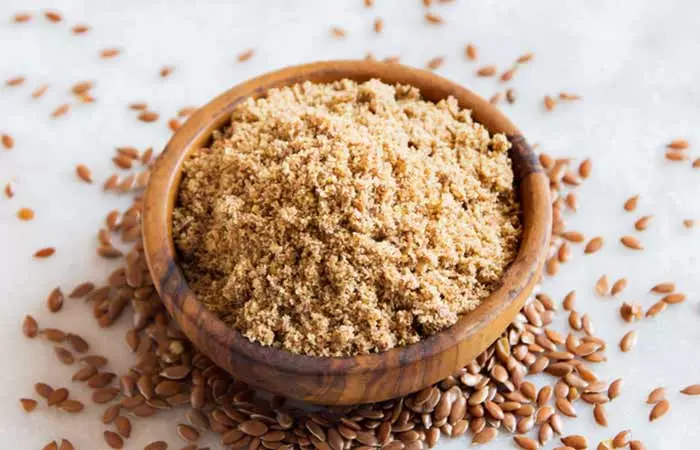
You Will Need
- 1 teaspoon of ground flaxseeds
- Water
What You Have To Do
- Take a teaspoon of ground flaxseeds and add a little water to it to form a thick paste.
- Apply this flaxseed paste directly to the leg ulcers.
- Leave it on for 15 to 20 minutes and then wash it off with water.
- You can also wrap the flaxseed paste in a clean cotton cloth and apply it to the wound.
Note:
Direct application of paste on the wound may lead to infections. Hence, wrapping it in a clean cloth is ideal.
- You can also consume flaxseeds for added benefits.
How Often You Should Do This
Do this at least 1-2 times daily.
Why This Works
Flaxseeds are a rich source of omega-3 fatty acids, which impart anti-inflammatory properties to them (30). They also help in the faster healing of open wounds and skin ulcers (31). Flaxseeds have antimicrobial properties that may help prevent infection (32).
13. Chamomile

You Will Need
- 1 teaspoon of chamomile herb
- 1 cup of hot water
What You Have To Do
- Add a teaspoon of chamomile herb to a cup of hot water and allow it to steep for 10-15 minutes.
- Strain and let it cool for a while.
- Soak a clean washcloth in this tea and wrap it gently around the leg ulcers.
- Remove the cloth after a while.
How Often You Should Do This
You can do this once daily.
Why This Works
Recent studies have concluded that chamomile extract can facilitate complete healing of open wounds (33). It possesses anti-inflammatory properties that reduce the inflammation and swelling around the leg ulcers, while its antibacterial properties help combat and prevent infection (34), (35).
These remedies are the safest options to treat leg ulcers. You can also take some precautions to avoid developing these ulcers again. They are as discussed below.
What Are Leg Ulcers?
Leg ulcers are sores that develop on broken or injured skin. Usually, they are more prominent right above the ankles, on the inner side of your legs.
Other than skin injuries, leg ulcers may also develop as a result of an underlying medical condition. The diseases which may lead to the development of leg ulcers are discussed briefly below.
What Causes Leg Ulcers?
Some of the most common diseases that lead to the formation of ulcers on your legs include:
- Venous Disease: This is one of the most common underlying causes of leg ulcers. It accounts for about 80% of cases of ulcers in the leg. Venous disease is usually a result of faulty valves in the veins. When the veins fail to push blood towards the heart, it flows back into the legs, eventually causing ulcers.
- Arterial Disease: Another disease that triggers leg ulcers is arterial disease. This accounts for 15% of leg ulcers and is a result of blocked arteries in the leg that inhibits blood flow to the underlying tissues.
- Other Medical Conditions: Leg ulcers can also be formed due to medical conditions like diabetes or rheumatoid arthritisi A chronic autoimmune disorder of joints, mainly hands and feet, where the joint swells up as the immune system attacks its tissues. .
So, how do you know if you have developed leg ulcers? Look out for the signs and symptoms mentioned below.
 Quick Tip
Quick TipSigns And Symptoms Of Leg Ulcers
The most common symptoms that accompany leg ulcers are as follows:
- Swelling of the ankles
- A swollen and enlarged vein in either of your legs
- Heaviness in the leg
- The leg begins to ache if you stand for long periods
- Discoloration on the leg
- Irritated or flaky skin
- Skin begins to harden and scale around the ulcers
These symptoms often vary in their severity. Although most leg ulcers usually disappear in a few days, some may be non-healing. It is always better to try and heal leg ulcers as soon as you can to prevent further complications. For that, you need to diagnose them first. The following are a few most common techniques used to diagnose leg ulcers.
How Are Leg Ulcers Diagnosed?
- A physical examination is the most common way to diagnose it.
- A doppler machine can also be used to diagnose leg ulcers based on the blood supply to your legs.
- In some cases, your doctor may refer you to a vascular specialist if he is not able to confirm your condition.
 Quick Tip
Quick TipYou can also take some precautions to avoid developing these ulcers. They are as discussed below.
Preventive Tips
- Keep a check on your weight
- Keep your legs elevated every now and then
- Wear compression stockings or keep bandages wrapped around them at all times, except while sleeping
- Avoid standing or sitting at a stretch
- Indulge in gentle exercises and walk daily. Dr. Anna Chacon, MD, FAAD, a double board-certified dermatologist, adds, “Venous leg ulcers and edema might become worse when you sit or stand motionless without elevating your legs. Always keep the injured leg raised whether you’re sitting or lying down, and consider walking frequently to stay active.”
- Keep a check on your blood sugar levels as leg ulcers can also be caused by diabetes
Venous leg ulcers may sometimes cause scarring. Thus, learning how to get rid of scars on legs may also help you prevent scarring by promoting better wound healing. However, always consult a doctor before trying any home remedies to avoid further complications.
Following these basic tips will prove beneficial for you in the long run. Leg ulcers can turn quite hideous and severe if left untreated. Hence, it is important to treat them on time to avoid complications. Given below are a few side effects that may arise when leg ulcers do not heal.
Side Effects Of Leg Ulcers
- Fever
- Unbearable pain
- A green and foul-smelling discharge from the ulcers
- The skin around the ulcers begins to swell
- The sores become bigger
- Inflamed skin around the ulcers
If you experience any of these symptoms, it is recommended you see a doctor immediately. Apart from these side effects, there are also some serious complications of untreated leg ulcers, including the development of skin cancer in wounds. The condition may also lead to disability, impacting the overall quality of your life (36).
If the remedies mentioned above fail, consult a doctor immediately. They may prescribe one or a combination of the treatments mentioned below to treat your leg ulcers.
Medical Treatment Options For Leg Ulcers
- Antibiotics: Doctors may prescribe oral antibiotics if a bacterial infection causes your leg ulcers (37).
- Zinc Supplements: Zinc may be effective in healing leg ulcer wounds, as it helps in wound healing by fixing cell membranes, reducing inflammation, and forming new blood vessels and scar tissue (38).
- Skin Graft: Skin grafting may help heal chronic and larger leg ulcers. In this process, a skin graft (from another body part) is attached to the healthy skin around the wound (39).
- Hyperbaric Oxygen Therapy: It involves breathing pure oxygen in a pressurized chamber. This may help heal chronic venous leg ulcers by increasing oxygen levels in the bloodstream and promoting tissue repair (40).
Infographic: Other Home Remedies To Heal Leg Ulcers
Leg ulcers are majorly caused by injuries. While these often heal on their own, they also may warrant medical compliance and remedies to ease the discomfort.
The following infographic provides information about a few other remedies that can ease leg ulcers and promote healing. Check them out.
Some thing wrong with infographic shortcode. please verify shortcode syntax
Leg ulcers are open sores that occur when bacteria get into your skin through cuts or injuries. If you have a leg ulcer, you might notice that your skin is red, swollen, painful, and sometimes oozy. You might also experience heaviness or pain in your legs when you stand for a long time. Luckily, there are many home remedies you can use to help your leg ulcer heal. These things include gotu kola, turmeric, aloe vera, coconut oil, tea tree oil, and yarrow. These ingredients can soothe your skin and help it heal faster. By using these home remedies in conjunction with any other treatments your doctor recommends, you can help your leg ulcer heal naturally and feel better.
Frequently Asked Questions
Should you put Neosporin on a leg ulcer?
According to Dr. Chacon. “Antibiotics used locally, such as Neosporin, might worsen an ulcer by causing a local allergy.”
What vitamin is good for leg ulcers?
Dr. Chacon says, “Leg ulcers caused by venous blood flow are long-lasting lesions that need a sufficient amount of nutrients to heal. The healing response may be sped up by vitamin C, which is essential to the dynamics of wound healing.”
Why is my leg ulcer not healing?
If your leg ulcer is not healing, it is highly recommended that you consult your doctor to identify the cause. Non-healing leg ulcers are usually a sign of an underlying disease, which may need immediate medical attention and treatment.
Why do leg ulcers keep coming back?
If your leg ulcers keep coming back, it means that they have turned chronic and there is some other underlying medical condition (like a venous disease) causing it. Venous leg ulcers become chronic and non-healing due to chronic inflammation. This happens when your venous system is unable to pump blood back to the heart.
What is the best cream for leg ulcers?
Creams and gels made with natural ingredients are safe and effective options to treat leg ulcers. You can use topical formulations made of components from herbs like yarrow and aloe vera to treat leg ulcers.
What is the best dressing for a weeping leg ulcer?
You can use honey-impregnated or hydrogel dressings to keep the wound moist and disinfected (41).
Can you put peroxide on a leg ulcer?
Currently, there is insufficient evidence that suggests that peroxide can heal a leg ulcer. Consult a doctor before trying this remedy.
Key Takeaways
- Leg ulcers develop on injured, broken skin and are generally triggered due to venous or arterial blockages or other medical conditions.
- Ulcers can cause swelling, pain in legs upon standing for a long time and can make the skin flaky and scaly.
- Massaging the affected area with natural ingredients like coconut oil, honey, turmeric, or aloe vera can soothe the skin as they have antibacterial and anti-inflammatory properties.
Illustration: Home Remedies To Heal Leg Ulcers And Prevention Tips
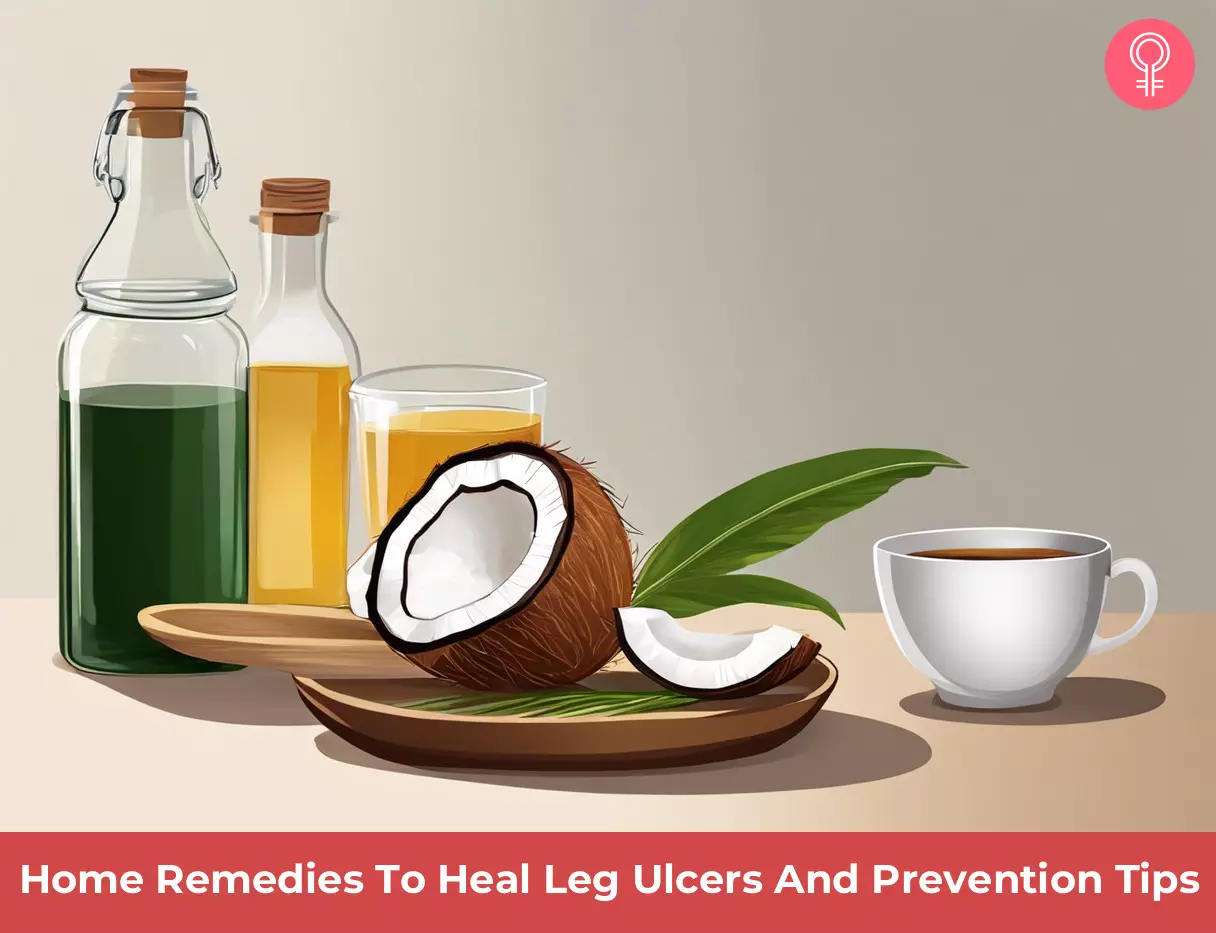
Image: Stable Diffusion/StyleCraze Design Team
Learn how to treat leg ulcers with easy home remedies! Check out this video for advice and direction on the most effective healing methods quickly and effectively.
References
Articles on StyleCraze are backed by verified information from peer-reviewed and academic research papers, reputed organizations, research institutions, and medical associations to ensure accuracy and relevance. Read our editorial policy to learn more.
- Efficacy of fresh aloe vera gel against multi-drug resistant bacteria in infected leg ulcers
https://www.ncbi.nlm.nih.gov/pmc/articles/PMC3395293/ - Topical application of aloe vera accelerated wound healing, modeling, and remodeling: an experimental study
https://pubmed.ncbi.nlm.nih.gov/25003428/ - Burn wound healing property of Cocos nucifera: An appraisal
https://www.ncbi.nlm.nih.gov/pmc/articles/PMC2792613/ - Effect of topical application of virgin coconut oil on skin components and antioxidant status during dermal wound healing in young rats
https://karger.com/spp/article-abstract/23/6/290/295679/Effect-of-Topical-Application-of-Virgin-Coconut?redirectedFrom=fulltext - Honey and healing of leg ulcers.
https://www.ncbi.nlm.nih.gov/pmc/articles/PMC1295493/ - Leg ulcer management with topical medical honey
https://pubmed.ncbi.nlm.nih.gov/19024040/ - Treatment of a venous leg ulcer with a honey alginate dressing
https://pubmed.ncbi.nlm.nih.gov/15944502/ - Centella asiatica (l.) urban: from traditional medicine to modern medicine with neuroprotective potential
https://www.ncbi.nlm.nih.gov/pmc/articles/PMC3359802/ - Pharmacological review on centella asiatica: a potential herbal cure-all
https://www.ncbi.nlm.nih.gov/pmc/articles/PMC3116297/ - A systematic review of the efficacy of centella asiatica for improvement of the signs and symptoms of chronic venous insufficiency
https://www.ncbi.nlm.nih.gov/pmc/articles/PMC3594936/ - Effects of Centella asiatica extract on dermal wound healing in rats
https://pubmed.ncbi.nlm.nih.gov/9246912/ - In vitro activity of Melaleuca alternifolia (tea tree) oil against bacterial and Candida spp. isolates from clinical specimens
https://pubmed.ncbi.nlm.nih.gov/11575735/ - Anti-inflammatory effects of Melaleuca alternifolia essential oil on human polymorphonuclear neutrophils and monocytes
https://pubmed.ncbi.nlm.nih.gov/15493453/ - A pilot evaluation of tea tree oil in the management of chronic venous leg ulcers
https://www.researchgate.net/publication/235631098_A_pilot_evaluation_of_tea_tree_oil_in_the_management_of_chronic_venous_leg_ulcers - The effect of tea tree oil (Melaleuca alternifolia) on wound healing using a dressing model
https://pubmed.ncbi.nlm.nih.gov/23848210/ - Antibacterial effect of curcuma longa (turmeric) against staphylococcus aureus and escherichia coli
https://pubmed.ncbi.nlm.nih.gov/26329948/ - Wound healing effect of curcumin: a review
https://pubmed.ncbi.nlm.nih.gov/27439410/ - Anti-inflammatory properties of curcumin, a major constituent of Curcuma longa: a review of preclinical and clinical research
https://pubmed.ncbi.nlm.nih.gov/19594223/ - Vinegar: medicinal uses and antiglycemic effect
https://www.ncbi.nlm.nih.gov/pmc/articles/PMC1785201/ - The effect of external apple vinegar application on varicosity symptoms, pain, and social appearance anxiety: a randomized controlled trial
https://www.ncbi.nlm.nih.gov/pmc/articles/PMC4735895/ - Venous leg ulcer: Topical treatment, dressings and surgical debridement
https://www.ncbi.nlm.nih.gov/pmc/articles/PMC4144245/ - Healing potential of Rosmarinus officinalis L. on full-thickness excision cutaneous wounds in alloxan-induced-diabetic BALB/c mice
https://pubmed.ncbi.nlm.nih.gov/20633625/ - Anti-inflammatory and antinociceptive effects of Rosmarinus officinalis L. essential oil in experimental animal models
https://pubmed.ncbi.nlm.nih.gov/19053868/ - Antimicrobial and antioxidant properties of rosemary and sage (Rosmarinus officinalis L. and Salvia officinalis L., Lamiaceae) essential oils
https://pubmed.ncbi.nlm.nih.gov/17708648/ - Study on antibacterial effect of medlar and hawthorn compound extract in vitro
https://pubmed.ncbi.nlm.nih.gov/24146490/ - Anti-inflammatory, gastroprotective, free-radical-scavenging, and antimicrobial activities of hawthorn berries ethanol extract
https://pubmed.ncbi.nlm.nih.gov/18698794/ - The effect of Achillea millefolium and Hypericum perforatum ointments on episiotomy wound healing in primiparous women
https://pubmed.ncbi.nlm.nih.gov/28027682/ - The estimation of the traditionally used yarrow (Achillea millefolium L. Asteraceae) oil extracts with anti-inflamatory potential in topical application
https://pubmed.ncbi.nlm.nih.gov/28163113/ - Phenolic acids profile, antioxidant and antibacterial activity of chamomile, common yarrow and immortelle (Asteraceae)
https://pubmed.ncbi.nlm.nih.gov/25632475/ - The analgesic and anti-inflammatory activity of linum usitatissimum in balb/c mice
https://pubmed.ncbi.nlm.nih.gov/28750553/ - Flaxseed lignan wound healing formulation: characterization and in vivo therapeutic evaluation
https://pubmed.ncbi.nlm.nih.gov/25239193/ - The potential of plant phenolics in prevention and therapy of skin disorders
https://www.ncbi.nlm.nih.gov/pmc/articles/PMC4783894/ - Wound healing activity of Matricaria recutita L. extract
https://pubmed.ncbi.nlm.nih.gov/17708380/ - Chamomile: A herbal medicine of the past with bright future
https://www.ncbi.nlm.nih.gov/pmc/articles/PMC2995283/ - In vivo antibacterial and wound healing activities of roman chamomile (chamaemelum nobile)
https://pubmed.ncbi.nlm.nih.gov/28034365/ - Infections and treatment of chronic leg ulcers: the use of antibiotics is too excessive; restrictive prescription is recommended
https://pubmed.ncbi.nlm.nih.gov/9951248/ - Zinc in wound healing modulation
https://www.ncbi.nlm.nih.gov/pmc/articles/PMC5793244/ - Chronic wounds: Venous leg ulcers: Are skin grafts effective?
https://www.ncbi.nlm.nih.gov/books/NBK326429/ - Hyperbaric oxygen therapy is an effective adjunctive therapy to manage treatment-resistant venous leg ulcers
https://www.ncbi.nlm.nih.gov/pmc/articles/PMC8474084/ - Dressings and topical agents for treating venous leg ulcers
https://www.ncbi.nlm.nih.gov/pmc/articles/PMC6513558/
Read full bio of Dr. Zeel Gandhi
- Dr. Anna Chacon, MD, FAAD, is a double board-certified dermatologist with over 7 years of experience. She has authored many peer-reviewed articles and managed clinical research studies during her fellowship. She completed her medical school in the PLME (Program of Liberal Medical Education) at Brown University.
 Dr. Anna Chacon, MD, FAAD, is a double board-certified dermatologist with over 7 years of experience. She has authored many peer-reviewed articles and managed clinical research studies during her fellowship. She completed her medical school in the PLME (Program of Liberal Medical Education) at Brown University.
Dr. Anna Chacon, MD, FAAD, is a double board-certified dermatologist with over 7 years of experience. She has authored many peer-reviewed articles and managed clinical research studies during her fellowship. She completed her medical school in the PLME (Program of Liberal Medical Education) at Brown University.
Read full bio of Shaheen Naser
Read full bio of Ravi Teja Tadimalla
Read full bio of Dipti Sharma







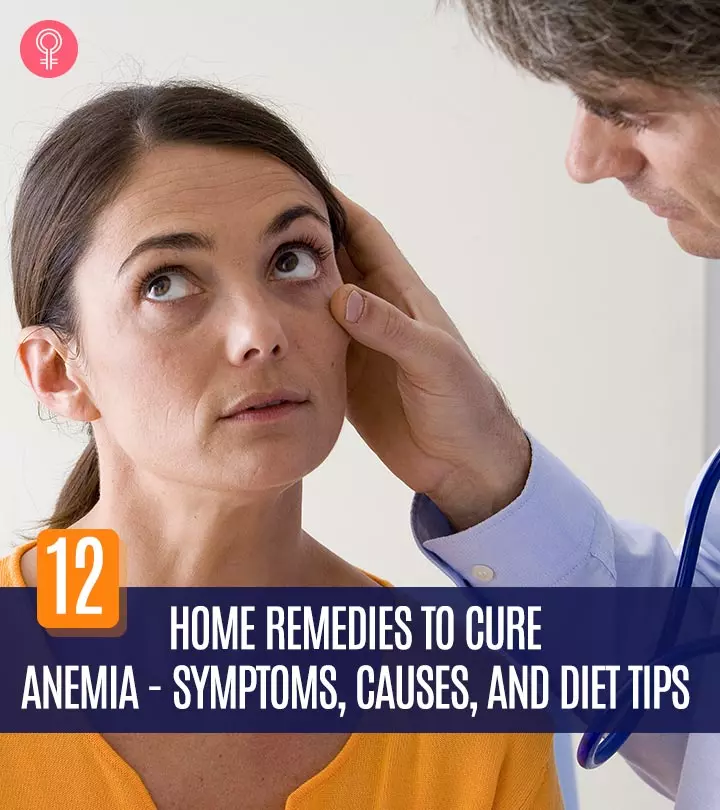


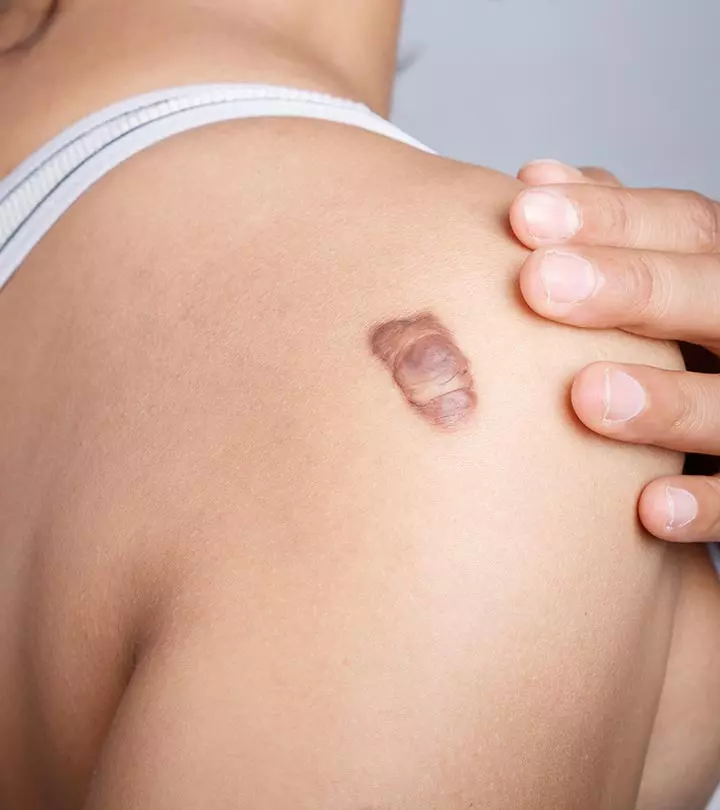

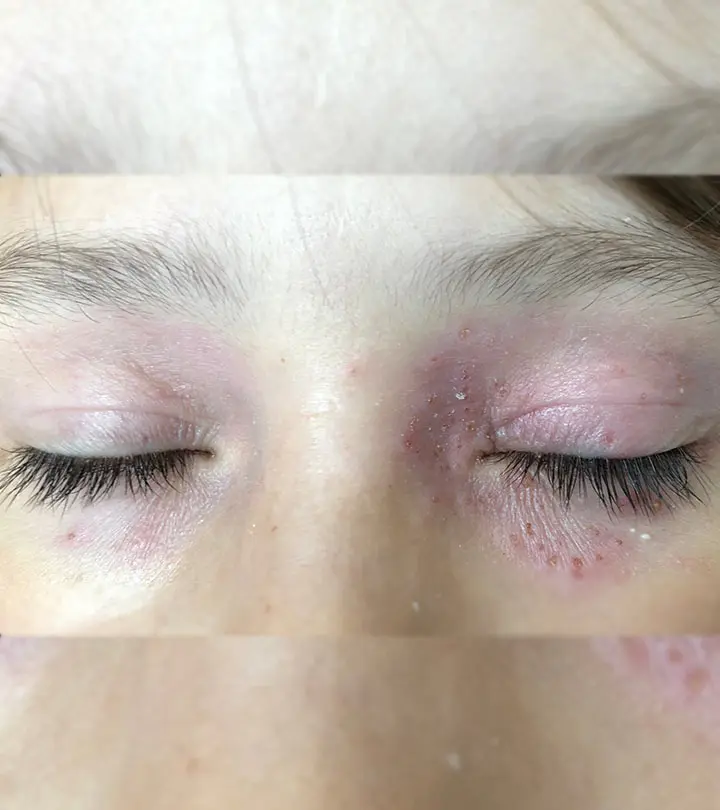








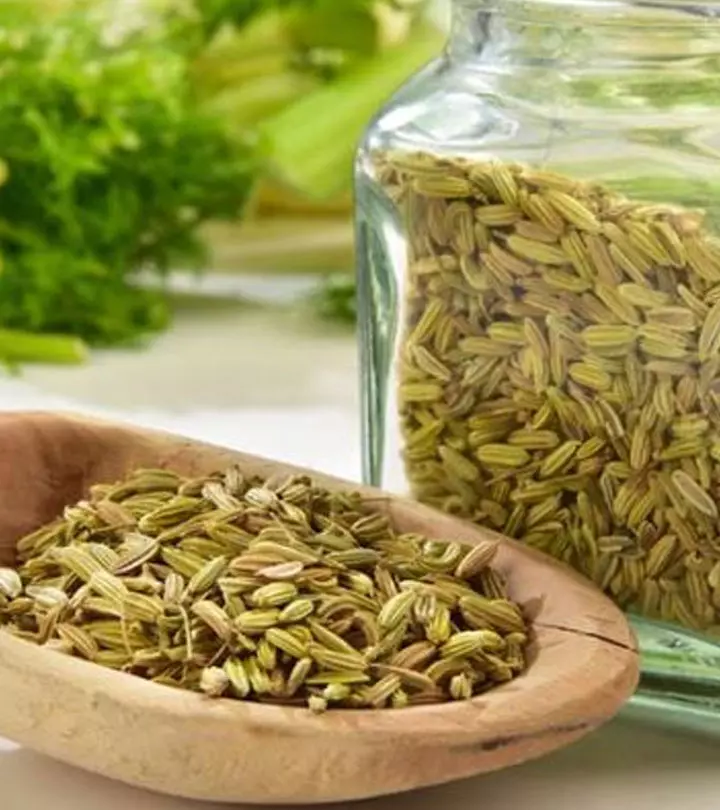

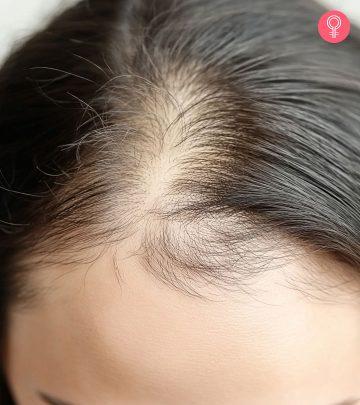

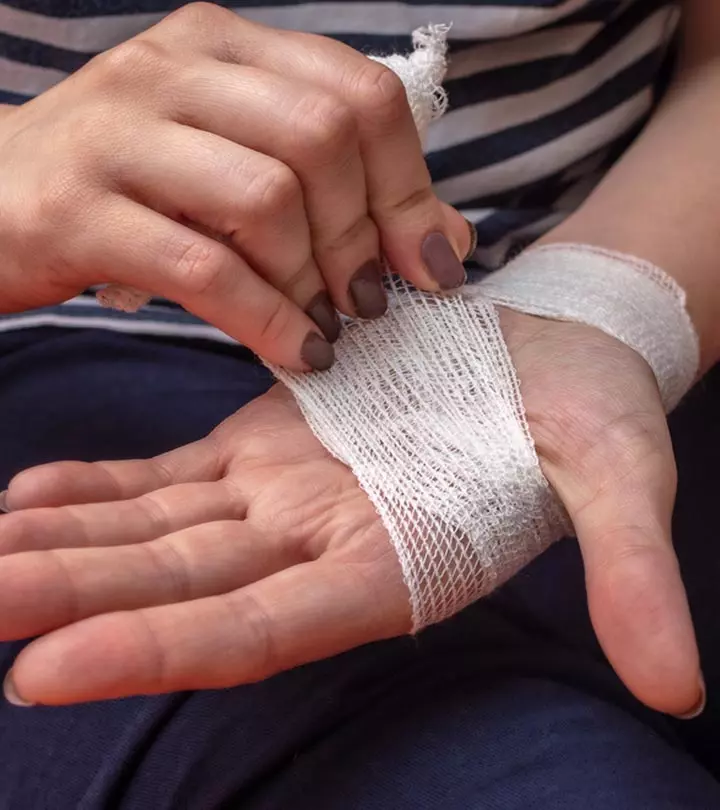


Community Experiences
Join the conversation and become a part of our empowering community! Share your stories, experiences, and insights to connect with other beauty, lifestyle, and health enthusiasts.